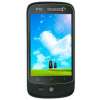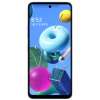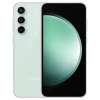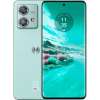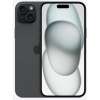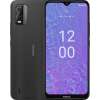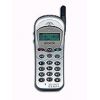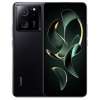TECNO showed a low-cost SPARK 40 with 120 Hz screen and 5200 mAh battery
|
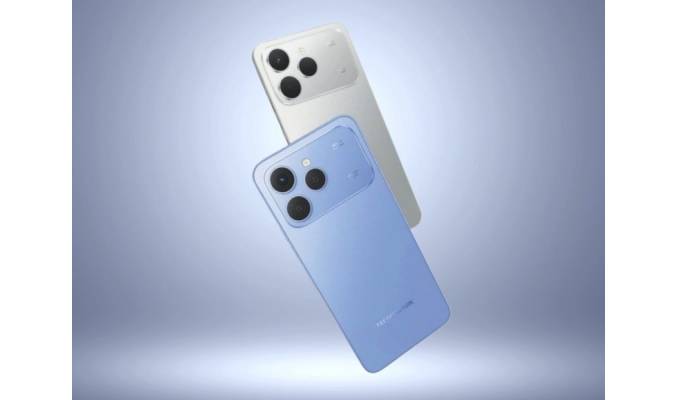 |
TECNO SPARK 40, a low-cost smartphone, has been released. The novelty received a screen with a frequency of 120 Hz, a rugged housing with water and dust protection to IP64 standard, as well as the ability to make calls without cellular connection.
As a screen, the manufacturer installed an IPS In Plane Switching (IPS) panels are an expensive option but they have excellent colour accuracy and far greater viewing angles then TN and VA panels (Not that we condone slouching while gaming). They are great for graphics design and photo editing. However, the only downside to IPS panels if that they can sometimes have a slower response time than TN panels. This is the only real problem if you’re a very competitive gamer or want to game in 3D. As of late “IPS” has become a big marketing word. Step into an Apple store and you would be hard pressed talking to someone that didn’t mention Apple’s “brand new IPS Displays!” In fact, Apple is probably one of the biggest marketers of this “new-found” technology. As a business person myself, this is when you have to tip your hat to Apple’s awesome marketing machine. Why? Well, because IPS is actually nothing new. In fact, this technology was originally invented in 1996 by Hitachi..panel with HD+ resolution (720x1600 pixels) and a frequency of 120 Hz. For the performance of the smartphone is responsible for the Helio G81 chip in conjunction with 8 GB of RAM In Plane Switching (IPS) panels are an expensive option but they have excellent colour accuracy and far greater viewing angles then TN and VA panels (Not that we condone slouching while gaming). They are great for graphics design and photo editing. However, the only downside to IPS panels if that they can sometimes have a slower response time than TN panels. This is the only real problem if you’re a very competitive gamer or want to game in 3D. As of late “IPS” has become a big marketing word. Step into an Apple store and you would be hard pressed talking to someone that didn’t mention Apple’s “brand new IPS Displays!” In fact, Apple is probably one of the biggest marketers of this “new-found” technology. As a business person myself, this is when you have to tip your hat to Apple’s awesome marketing machine. Why? Well, because IPS is actually nothing new. In fact, this technology was originally invented in 1996 by Hitachi..panel with HD+ resolution (720x1600 pixels) and a frequency of 120 Hz. For the performance of the smartphone is responsible for the Helio G81 chip in conjunction with 8 GB of RAM Random Access Memory (RAM) is the place in a computer where the operating system, application programs, and data in current use are kept so that they can be quickly reached by the computers processor. (plus 8 GB of virtual storage) and 256 GB of permanent memory in the maximum configuration. Random Access Memory (RAM) is the place in a computer where the operating system, application programs, and data in current use are kept so that they can be quickly reached by the computers processor. (plus 8 GB of virtual storage) and 256 GB of permanent memory in the maximum configuration.
There is a rear camera with a primary 50MP sensor, an 8MP front camera, dual speakers with DTS Sound support and a 5200mAh battery with 45W charging support. Dual SIM support, Wi-Fi Wi-Fi is the name of a popular wireless networking technology that uses radio waves to provide wireless high-speed Internet and network connections. A common misconception is that the term Wi-Fi Wi-Fi is the name of a popular wireless networking technology that uses radio waves to provide wireless high-speed Internet and network connections. A common misconception is that the term Wi-Fi Wi-Fi is a type of wireless networking protocol that allows devices to communicate without cords or cables. Wi-Fi is technically an industry term that represents a type of wireless local area network (LAN) protocol based on the 802.11 IEEE network standard. It is the most popular means of communicating data wirelessly, within a fixed location, today. is short for "wireless fidelity," however this is not the case. Wi-Fi Wi-Fi is a type of wireless networking protocol that allows devices to communicate without cords or cables. Wi-Fi is technically an industry term that represents a type of wireless local area network (LAN) protocol based on the 802.11 IEEE network standard. It is the most popular means of communicating data wirelessly, within a fixed location, today. is short for "wireless fidelity," however this is not the case. Wi-Fi Wi-Fi is a type of wireless networking protocol that allows devices to communicate without cords or cables. Wi-Fi is technically an industry term that represents a type of wireless local area network (LAN) protocol based on the 802.11 IEEE network standard. It is the most popular means of communicating data wirelessly, within a fixed location, today. is simply a trademarked phrase that means IEEE 802.11x., Bluetooth Wi-Fi is a type of wireless networking protocol that allows devices to communicate without cords or cables. Wi-Fi is technically an industry term that represents a type of wireless local area network (LAN) protocol based on the 802.11 IEEE network standard. It is the most popular means of communicating data wirelessly, within a fixed location, today. is simply a trademarked phrase that means IEEE 802.11x., Bluetooth Bluetooth is a global wireless communication standard that connects devices together over a certain distance. Think headset and phone, speaker and PC, basketball to smartphone and more., FM radio, GPS Bluetooth is a global wireless communication standard that connects devices together over a certain distance. Think headset and phone, speaker and PC, basketball to smartphone and more., FM radio, GPS The Global Positioning System (GPS) is a satellite-based navigation system made up of at least 24 satellites. GPS works in any weather conditions, anywhere in the world, 24 hours a day, with no subscription fees or setup charges. The U.S. Department of Defense (USDOD) originally put the satellites into orbit for military use, but they were made available for civilian use in the 1980s.., IR sensor and USB Type-C The Global Positioning System (GPS) is a satellite-based navigation system made up of at least 24 satellites. GPS works in any weather conditions, anywhere in the world, 24 hours a day, with no subscription fees or setup charges. The U.S. Department of Defense (USDOD) originally put the satellites into orbit for military use, but they were made available for civilian use in the 1980s.., IR sensor and USB Type-C With the continued success of the USB interface, there exists a need to adapt USB technology to serve newer computing platforms and devices as they trend toward smaller, thinner and lighter form-factors. Many of these newer platforms and devices are reaching a point where existing USB receptacles and plugs are inhibiting innovation, especially given the relatively large size and internal volume constraints of the Standard-A and Standard-B versions of USB connectors. port are also among the key specs. With the continued success of the USB interface, there exists a need to adapt USB technology to serve newer computing platforms and devices as they trend toward smaller, thinner and lighter form-factors. Many of these newer platforms and devices are reaching a point where existing USB receptacles and plugs are inhibiting innovation, especially given the relatively large size and internal volume constraints of the Standard-A and Standard-B versions of USB connectors. port are also among the key specs.
A unique feature of the TECNO SPARK 40 is the FreeLink feature, which uses Bluetooth to make calls when there is no cellular service within 500 meters.
The TECNO SPARK 40 is available in black, gray, white and blue body colors in four configurations: 4/128GB, 6/128GB, 8/128GB, and 8/256GB. Pricing starts at approximately $130.
|





